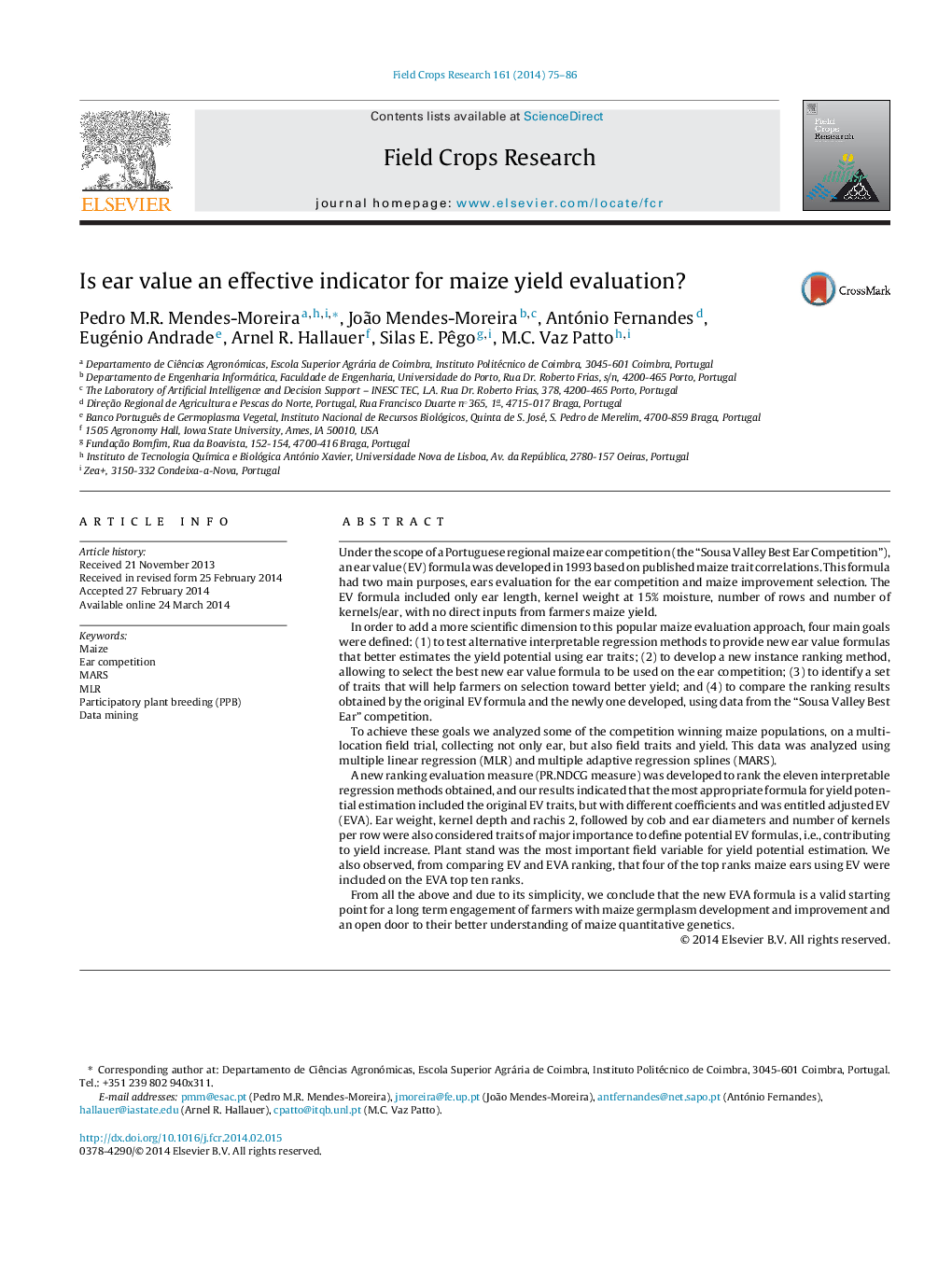| Article ID | Journal | Published Year | Pages | File Type |
|---|---|---|---|---|
| 4510030 | Field Crops Research | 2014 | 12 Pages |
•A set of maize traits that could help farmers on selection for yield was identified.•A new ear value formula that better estimates the yield potential was obtained.•A new instance ranking measure to be used for evaluating ear ranks is proposed.•A new method to be used in participatory research and pre-breeding is proposed.
Under the scope of a Portuguese regional maize ear competition (the “Sousa Valley Best Ear Competition”), an ear value (EV) formula was developed in 1993 based on published maize trait correlations. This formula had two main purposes, ears evaluation for the ear competition and maize improvement selection. The EV formula included only ear length, kernel weight at 15% moisture, number of rows and number of kernels/ear, with no direct inputs from farmers maize yield.In order to add a more scientific dimension to this popular maize evaluation approach, four main goals were defined: (1) to test alternative interpretable regression methods to provide new ear value formulas that better estimates the yield potential using ear traits; (2) to develop a new instance ranking method, allowing to select the best new ear value formula to be used on the ear competition; (3) to identify a set of traits that will help farmers on selection toward better yield; and (4) to compare the ranking results obtained by the original EV formula and the newly one developed, using data from the “Sousa Valley Best Ear” competition.To achieve these goals we analyzed some of the competition winning maize populations, on a multilocation field trial, collecting not only ear, but also field traits and yield. This data was analyzed using multiple linear regression (MLR) and multiple adaptive regression splines (MARS).A new ranking evaluation measure (PR.NDCG measure) was developed to rank the eleven interpretable regression methods obtained, and our results indicated that the most appropriate formula for yield potential estimation included the original EV traits, but with different coefficients and was entitled adjusted EV (EVA). Ear weight, kernel depth and rachis 2, followed by cob and ear diameters and number of kernels per row were also considered traits of major importance to define potential EV formulas, i.e., contributing to yield increase. Plant stand was the most important field variable for yield potential estimation. We also observed, from comparing EV and EVA ranking, that four of the top ranks maize ears using EV were included on the EVA top ten ranks.From all the above and due to its simplicity, we conclude that the new EVA formula is a valid starting point for a long term engagement of farmers with maize germplasm development and improvement and an open door to their better understanding of maize quantitative genetics.
